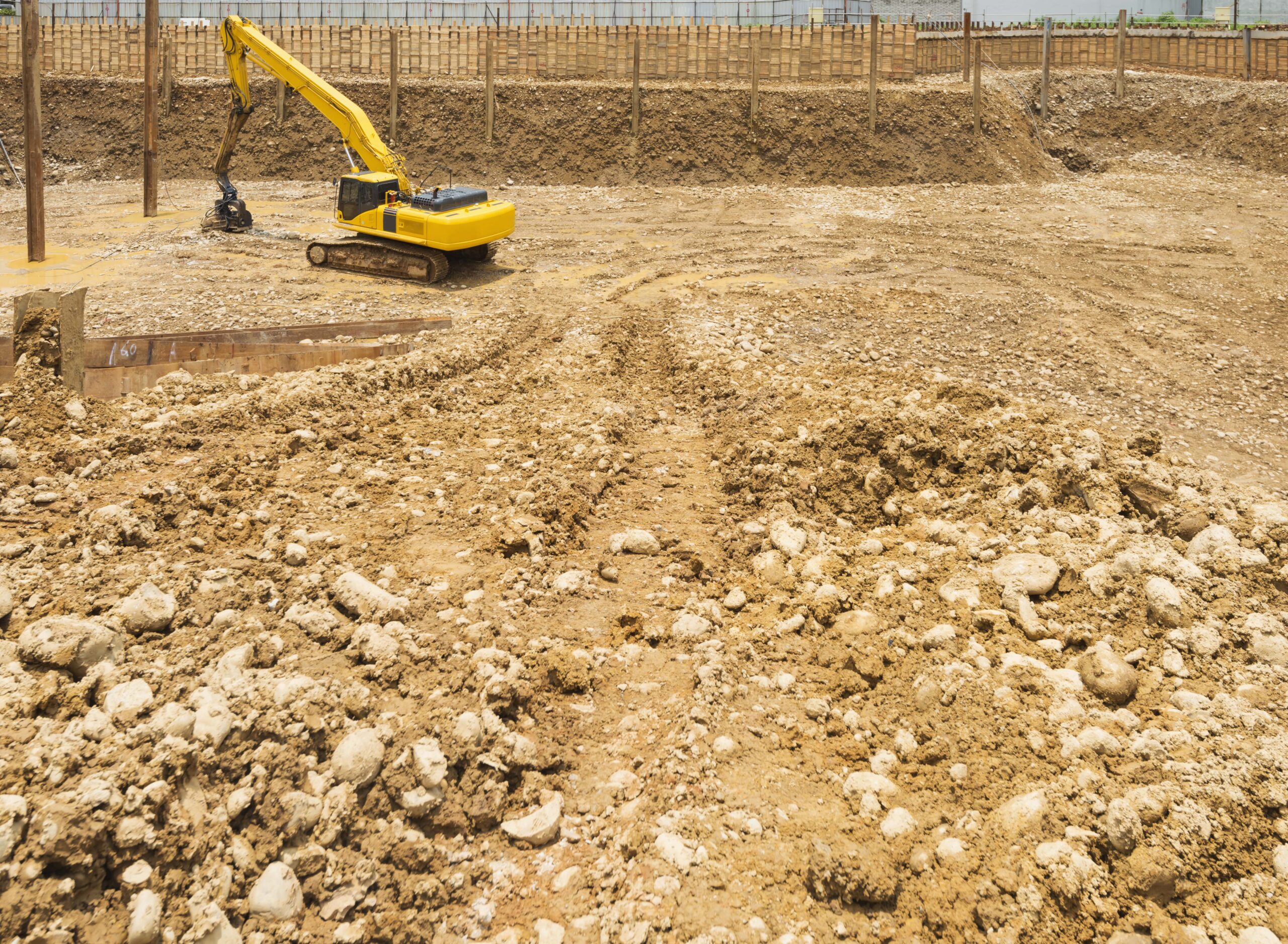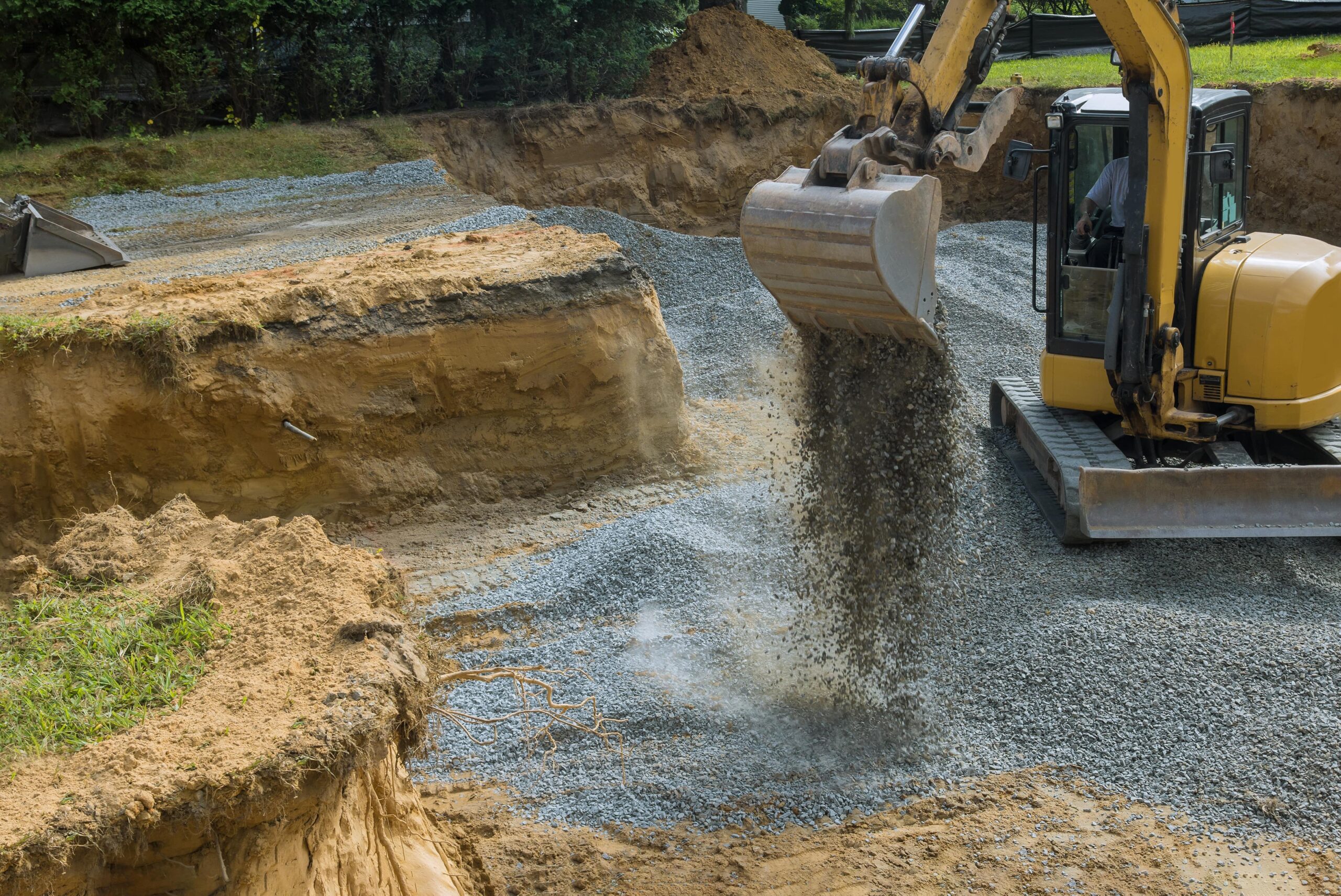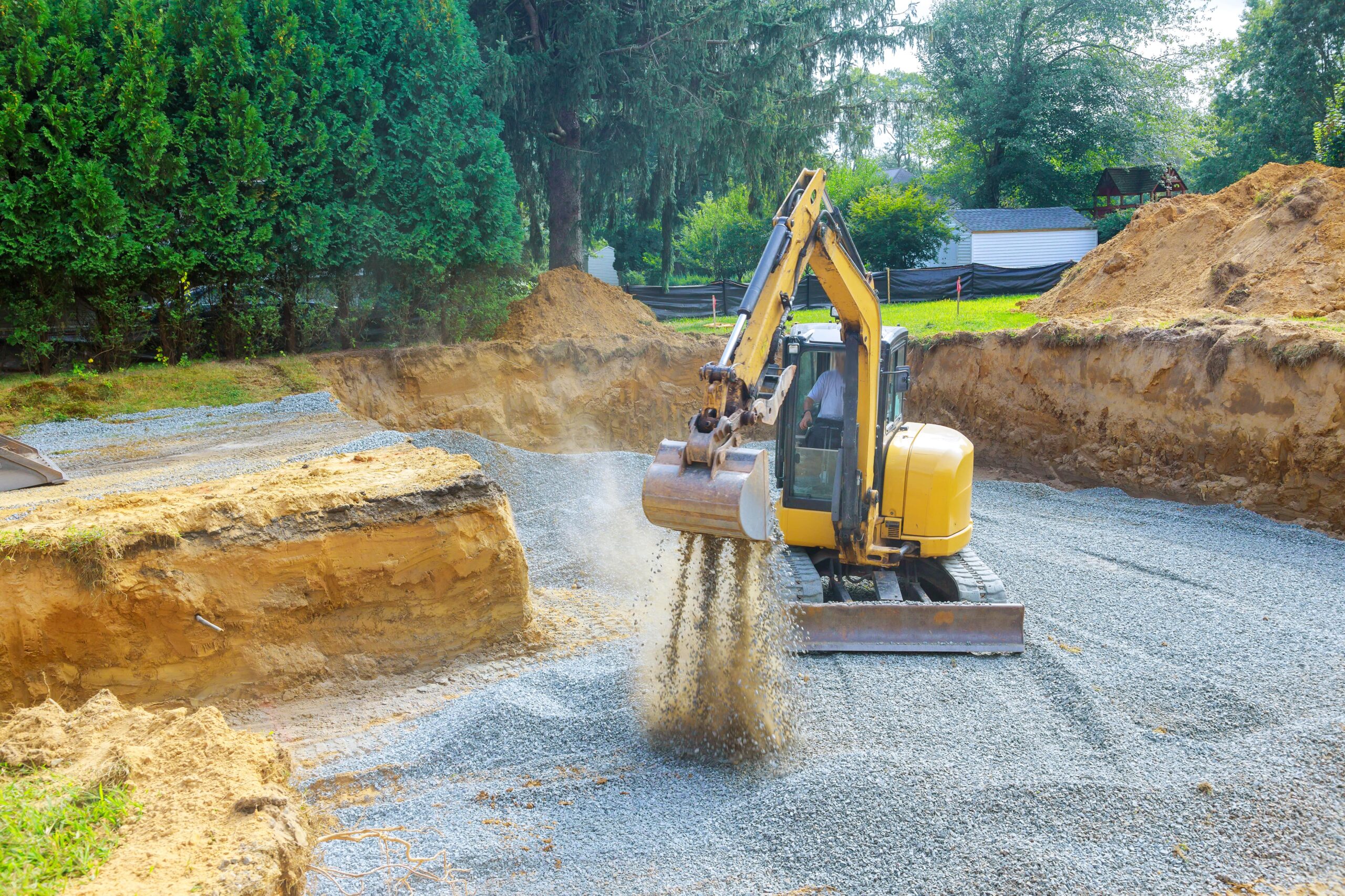Grading
Grading
Grading, often referred to as land leveling, is a crucial pre-construction activity that involves sculpting the land to meet the requirements of a specific project. This process serves several key purposes:
- Enhancing the aesthetic appeal of the property.
- Ensuring proper drainage to protect the structure and surrounding environment.
- Complying with zoning regulations and other legal requirements.
- Defining the allowable height and depth for cuts, fills, and swales.
Site grading is vital to preventing post-construction issues, such as structural instability or equipment malfunctions. Proper grading ensures the safety of heavy machinery used during construction and lays the groundwork for a successful project.

Steps in Grading
Grading is among the first steps of any construction project and requires careful planning and execution. The process begins with a survey of the land, identifying its elevations and contours. Based on this information, a site grading plan is developed, which typically includes:
- Adding or removing materials to shape the land.
- Determining the equipment needed to achieve the desired surface.
- Managing debris generated during the process.
- Addressing the placement of underground utilities.
Once the plan is finalized, graders, excavators, and other heavy machinery are deployed to execute the work.

Equipment Used in Grading
Two primary types of equipment are extensively used in grading: excavators and graders.
- Excavators are employed to remove large quantities of soil and rock, preparing the site for further work.
- Graders are used to create smooth, even surfaces for both the construction site and adjacent areas that require aesthetic treatment.
Grading differs from excavation, although the two are often confused. Excavation focuses on digging and removing materials, while grading occurs afterward to smooth and level the land, ensuring proper drainage and a visually pleasing landscape.
By combining precision and expertise, grading transforms uneven or unprepared land into a stable, functional, and attractive foundation for construction and landscaping.

Preparation
Grading also plays a critical role in foundation preparation, ensuring the soil is ready to support the weight of a structure. This process involves compacting the soil for optimal stability and addressing water runoff and drainage management to prevent long-term issues. Proper grading at this stage lays the groundwork for a stable and durable construction project.
Depending on the specific requirements, grading can be categorized into several types:
- Architectural Grading: Preparing foundation areas, managing drainage, and shaping or modifying landscapes.
- Rough Grading: Leveling the land and setting slopes for effective water drainage, which may also involve relocating, adding, or removing topsoil to achieve desired elevations.

Steps of Preparation
- Landscape Grading: Preparing the site specifically for landscaping projects, ensuring the ground is suitable for aesthetic enhancements.
- Finished Grading: Adding final touches to the construction site, particularly in areas surrounding the structure, to ensure a polished appearance.
- Re-Grading: Lowering or reshaping land masses to create level areas, allowing structures to be built at appropriate elevations while maintaining proper drainage.
- Final Grading: Spreading topsoil or sand over leveled areas to promote vegetation growth, followed by seeding to enhance the landscape.

Quality Construction. Honest service. Great value
Our professional team works to increase productivity and cost effectiveness on the market

OurTestimony

"I could probably go into sales for you. We've seen amazing results already. I am so pleased with this product. The best on the net!"
John Doe

"I could probably go into sales for you. We've seen amazing results already. I am so pleased with this product. The best on the net!"
John Doe

"I could probably go into sales for you. We've seen amazing results already. I am so pleased with this product. The best on the net!"
John Doe


